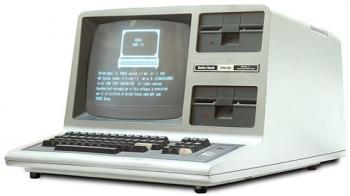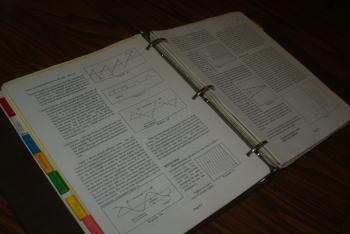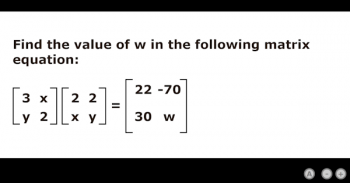

There's nothing like the fresh white landscape of a snowstorm (plus the first snow day for many students and teachers) to put you in the Christmas spirit! When you come inside from making snowmen and snow angels (or just shoveling snow!) and you're sipping hot chocolate, while looking out the window at the fresh falling snow, here are a few things on the site that may be in keeping with your mood:
Christmas Tree Light Calculator
This was built just for fun, at the request of one of Professor Puzzler's Pre-Calculus students. But even though it was just for fun, you might find it useful in determining how many feet of light strands to buy for your tree!
Make Your Own Snowflakes!
That's right - these snowflakes don't have to be shoveled, no matter how many of them you make. Choose from a variety of regular polygons to base your design on, and pick from a full spectrum of colors and shades to create your masterpiece!
'Twas the Night Before Christmas Jumbles and Searches
Choose from a list of vocabulary words like courser, thistle, miniature, and obstacle - all vocabulary words you'll find in Clement Clarke Moore's Christmas masterpiece - and create printable worksheets of jumbled words, word searches, and cross search puzzles.
Christmas Songs Reference
This brief reference unit contains two of the songs of Christmas - the song of Zacharias, and Mary's Magnificat - from the Bible account of Luke's Gospel. The related questions are designed to encourage reading for comprehension.
Nativity Narrative Quiz
For people who think they've got the Christmas story down pat, this quiz puts a different spin on it - the quiz gives a variety of statements about the Christmas story and asks you to decide whether the statement is "traditional" or "biblical"
Much Much More!
This is far from an exhaustive list of Christmas resources on The Problem Site. To make it easier for you to find them, there's a new "Seasonal Resources" section that provides links to more features. Not only can you get Christmas themed resources, but this page provides resources for a variety of holidays and seasons.
Christmas is a Letdown (On another site)
TheProblemSite's administrator also serves as the main writer for a site called "Biblical Illuminations" which provides devotional and spiritual messages. "Christmas is a letdown" is this year's Christmas message on the site.
The Physics Study Guide!
The Physics Study Guide is about 1/2 complete! We have units one through six, plus the appendices online. You can find them here:
Mr. Physics' High School Physics Study Guide
In addition to a large number of sample problems, in which Mr. Physics talks you through how to solve problems in kinematics, forces, momentum, simple harmonic motion, and more, there are over 200 practice problems for you to try!
More units will be appearing in the spring semester, after Christmas Break.
Happy Holidays, everyone!
During the 1985 - 1986 school year (that was the year I graduated from high school), I took high school level Physics. It was the first science course I took that really came alive for me and interested me. In fact, it interested me so much that when I went to college I decided to major in Engineering Physics. Of course, it only took one semester to realize that there were no college professors who could make the subject come to life like my high school teacher did. In his class, we did crazy, disturbing problems like this:
...and like this:
Who wouldn't love Physics when it was taught like that?
My high school Physics teacher taught from the mid 60s until the late 90s. He had a passion for the subject, and it rubbed off on his students. He also wasn't content with any of the Physics textbooks that he used; they never covered subjects in the order and manner in which he wanted them covered.

So in the 80s, he began composing his own Physics study guide to use in his classes. He spent many summer hours seated in front of a TRS-80 (anyone remember those computers?) typing his own explanations for every subject he intended to cover, along with many sample problems and detailed solutions.
The result was a fourteen-chapter study guide which fills a massive three-ring binder full to overflowing. Every year students would say, "Can I keep my copy to take to college with me?" The answer was always "Of course!"
Students from his classes started to get a reputation at the college level. The general rule of thumb was that a high school Physics course would cover one semester of college Physics. But students from our school never saw anything we didn't already know in college Physics until about the time of spring break. And college Physics professors, when they found out who a student's high school Physics teacher was, would say, "Oh, you're going to do just fine here."
He was just that kind of teacher.
Oh...and he's also my father.
"But what happened to that study guide, typed into obsolete computers like 'trash-80s' 30 years ago?"

It's been sitting in a massive three-ring binder overflowing with explanations, diagrams, problems, and solutions. And the digital files have been sitting in folders on Mr. Physics' computer. Until now. He has graciously agreed that it's time for all that work to be shared, so other teachers and students can make use of it.
Converting those old files is a time-consuming process, and many of the images are being recreated from scratch, so we're going to be posting units from the Physics Study Guide one chapter at a time over the course of several months. Not all units are being published in order. For example, Unit Six was the first unit published. You can find them here:
Unit One: Kinematics - Motion in One Dimension
Unit Two: Dynamics - Causes of Motion
Unit Four: Kinematics 2 - Motion in Curved Lines
Unit Five: Impulse and Momentum
Unit Six: Rotational Motion and Simple Harmonic Motion
The Appendices - Units, Constants, and Definitions
Unit One contains a great list of advice for problem solving in Physics, as well as a large collection of solved and unsolved kinematics problems. My honors physics students will be doing a unit on torques later on this year (a topic that many high school curricula do not cover), and they will be using this page as part of their curriculum: Rotational Equilibrium and Torques.
Oh...and by the way...happy birthday, dad!
In the Pro Problems section of this site we have hundreds of math and science questions that you can use in your classroom. A new feature has been added to this section of the site: Presentation Mode. This mode allows teachers to put these problems on a big screen for use in a classroom setting.
In presentation mode, the site goes into full screen mode, so the browser address bar and navigation elements disappear, and the problem takes up the entire screen.

We've done our best to automatically resize the problem for full screen size, but we also recognize that, with many different teachers writing problems, and each using different ways of formatting their problems, and with every teacher using different display devices, we can't guarantee that every problem is perfectly sized for your display. Because of this, we've included zoom icons in presentation mode (in the bottom right corner of the display) so you can tweak the font size of the problem.
If you are a subscribed teacher, the displayed solution on the page also has a presentation mode, so after having your students work on the problem, you can put the solution on the big screen. If a solution is detailed and/or complex enough that it will not fit on the screen, a scroll bar will appear, allowing you to scroll through the solution as you talk about it with your class. To make it easy to toggle back and forth between problem and solution, there are "Q" and "A" icons at the bottom of the screen. Just click to switch to the other view.
However, the solutions are hidden behind a subscription wall, in order to prevent students from accessing them, so if you need/want solutions, head on over to the subscription page to get access to the solutions!
How do I use this feature in my classroom? Every day, for each class, I find a problem that fits the current subject of study (if I can't find one, I create one and post it!), and start the class with my students attempting to solve a problem, while I handle mundane tasks like attendance, handing back papers, etc.
Two new reference units have been added to the site, which teachers may want to explore for the next coming school year as supplemental materials.
Simplifying Radicals
Simplifying radicals is an area of Algebra that students often find frustrating (and also pointless). In this unit, we discuss first of all the reasons why having standard rules for simplifying radicals isn't pointless, and then we go into detail on many of the rules for simplifying different kinds of radical expressions, including some less common but interesting radical simplifications!
Significant Figures
This unit covers another area of math and science study that many students consider to be pointless. Again, we address the question of why sig figs really are useful, and then explain the rules for finding significant digits, and the rules for applying arithmetic operations like addition and multiplication when using significant figures. There is also an explanation of the difference between measured and non-measured quantities, as well as some word problems requiring proper use of significant figures.
We hope you find these units helpful!
Good morning! It was pointed out to me yesterday that this is a palindromic week - all the dates this week are palindromes:
6-12-16, 6-13-16, etc.
Of course, it's not a true palindrome unless you remove the hyphens (since they make the number non-symmetric): 61216, 61316. Also, it's not just this week; it's any date this month in the teens: 61016 through 61916.
Even though I didn't know it was a palindromic week, we have two new Professor Puzzler posts about palindromes:
On a related subject, I wanted to share with you one of my favorite words about words: semordnilap.
A semordnilap is a word which, when spelled backwards, is also a word. For example, STOP is a semordnilap, because when you spell it backwards, you have POTS, which is also a word. Semordnilaps are important in one of the word games over at Quote Puzzler. In fact, there's even a list of all English-language semordnilaps over there: Semordnilaps in English.
And by the way, if you haven't done so yet, you should reverse the word semordnilap to see what you get.
Which means, of course, that even though palindrome is not a palindrome, semordnilap is a semordnilap.


